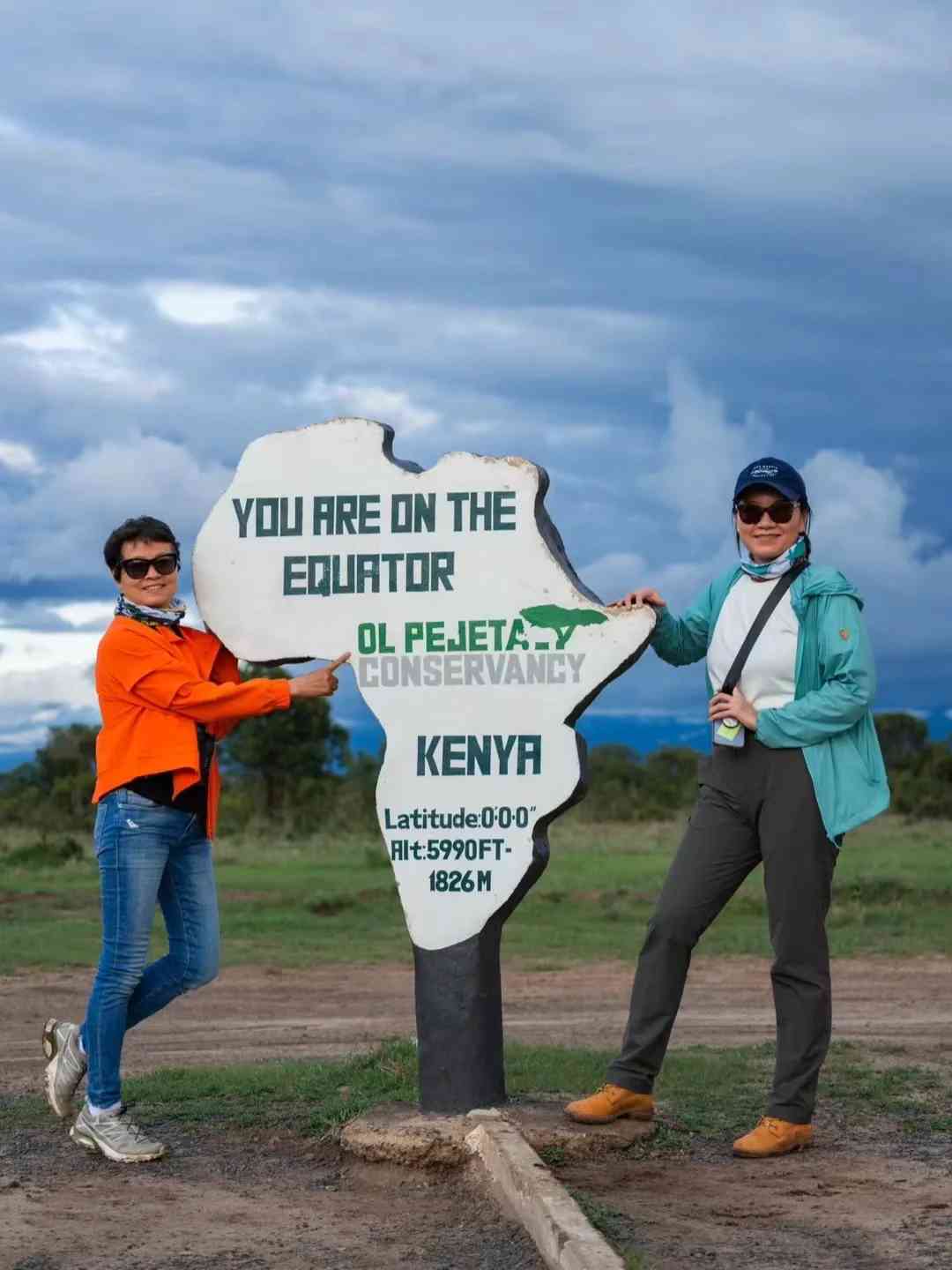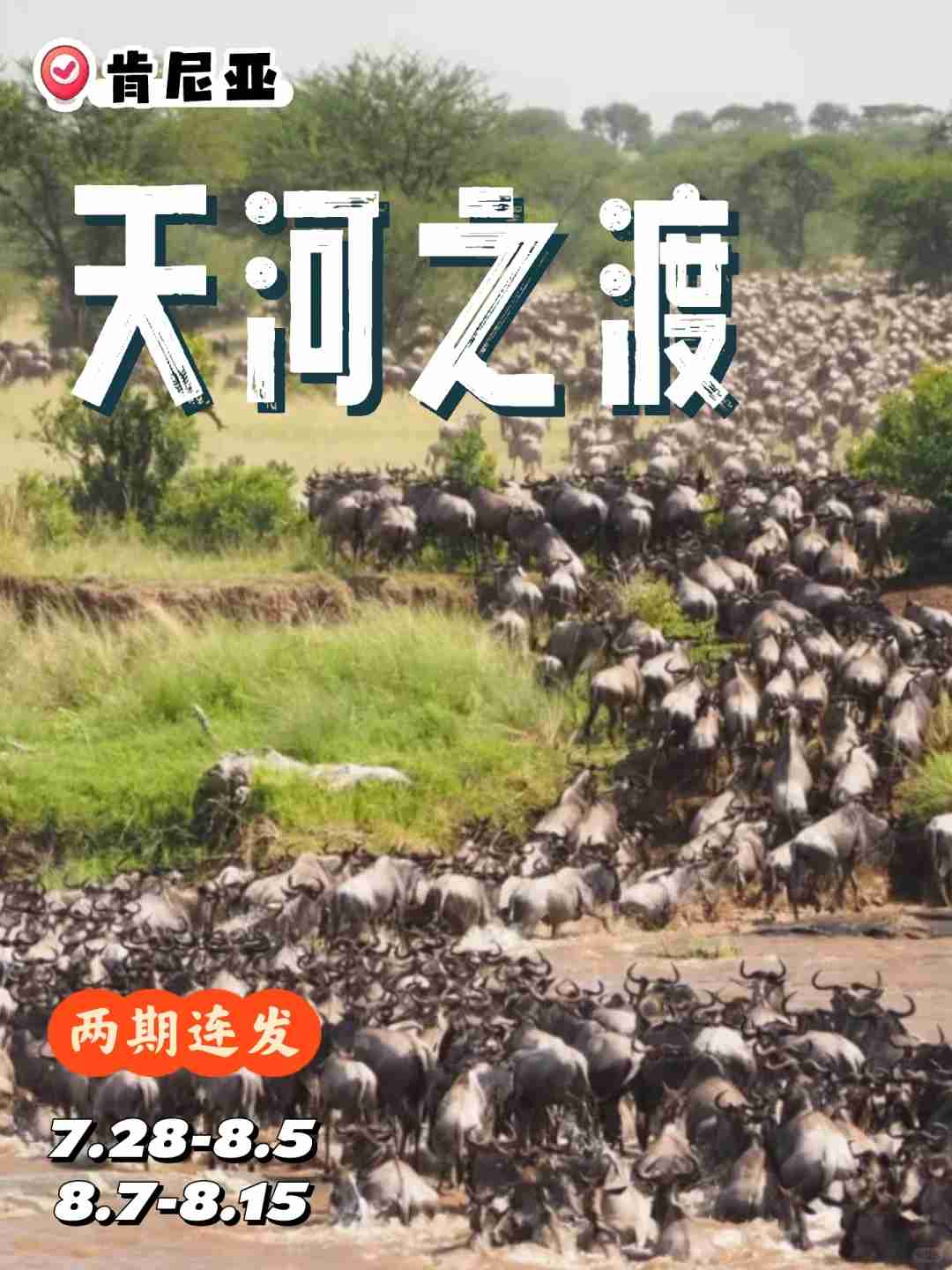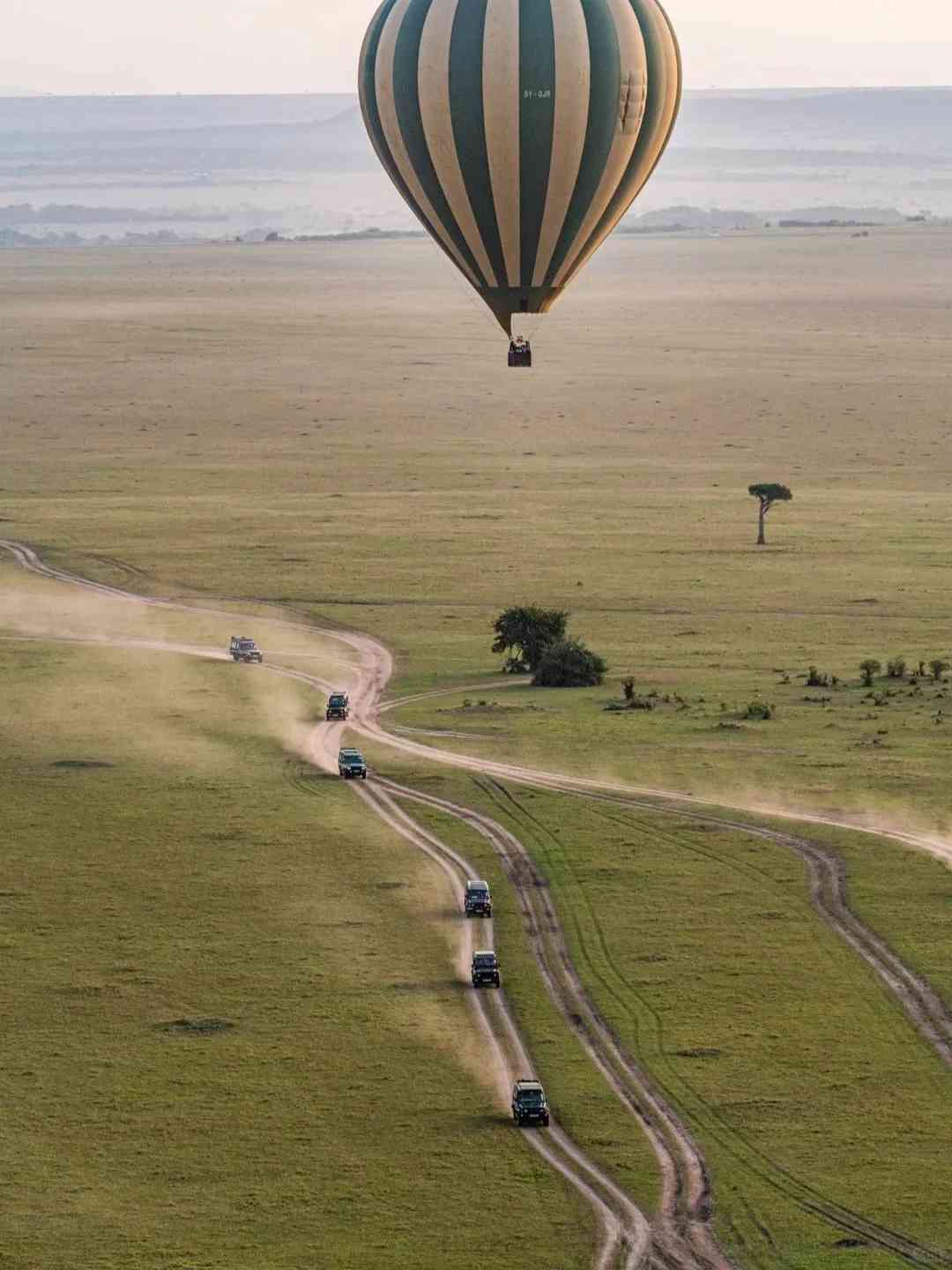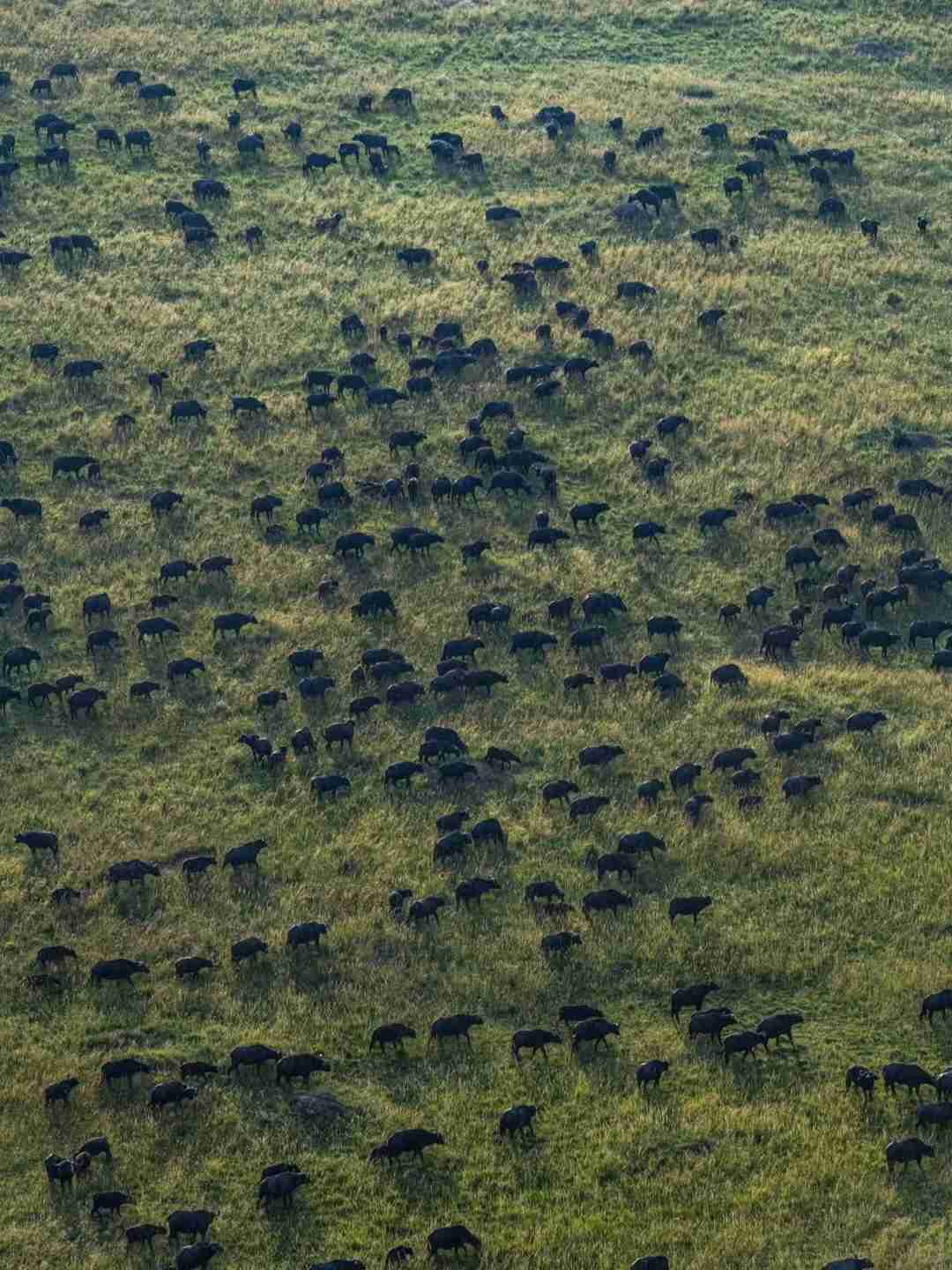Unforgettable Life and Death Race: Witnessing Animal Migration in Wild Kenya
On the viewing ground, my hand gripping the binoculars was slightly damp with sweat.

Accompanied by the thunderous, staggered hoofbeats that shook the earth, the animal migration army surged out like a black flood from the layered and intertwined vegetation, raising clouds of dust. As if by some unspoken signal, in an instant, the flood converged and diverged towards several specific directions.

The voices of the tourists beside me were a mix of excitement and a hint of unease: “Look! They’ve reached the riverbank…”

The long-awaited moment has finally arrived.
—A life-and-death ultimate test is about to unfold on the Mara River!

At this moment, it belongs to millions of wildebeests, who have traveled a long distance and finally arrived at the Mara River where we are.
Looking across, the lush grasslands of the Maasai Mara lie ahead.
But what stands before all the herbivores now is the perilous Mara River, with its wide and turbulent waters, hidden currents, and lurking crocodiles, making danger imminent.
Even though they can smell the scent of death, the wildebeests have no choice but to cross the river!
Several wildebeests cautiously probed the riverbank, searching for the best entry point. Suddenly, as if signaled by an unseen leader, the herd surged forward like a tidal wave, plunging into the river. The scene erupted into chaos! Hoofbeats thundered, water splashed, and the animals jostled each other, pushing forward bravely. In the turbulent waters, many wildebeests fell, only to quickly struggle back up and rush towards the hopeful opposite bank.
Crocodiles, which had been lurking in the water for a long time, seized the opportunity, biting the hind legs of the wildebeests and trying to drag their prey into deeper waters. The wildebeests fought desperately, some managing to break free, while others unfortunately became prey, watching their companions leave them behind.
In nature, animals do this to ensure the continuation of life, crossing mountains, rivers, and seas, and writing the epic of life’s endurance in their battles against predators and harsh environments.
The crossing of the river is a test of physical strength, a gamble of luck, and ultimately a contest of the will to survive.
🎓 About the “Great River Crossing”
Every year from July to September, as the dry season arrives on the African continent and the Serengeti’s vegetation withers, approximately 2 million herbivores, in search of food, embark on a journey from Tanzania’s Serengeti National Park. They migrate north, crossing the treacherous Mara River, and eventually reach the lush grasslands of Kenya’s Maasai Mara.
The Mara River, with its swift currents, not only harbors crocodiles and hippos but also attracts lions and cheetahs waiting on the banks. The herbivores must sprint with all their might, taking a desperate leap for survival.
During the crossing, the wildebeest herds employ a strategic formation, with the strongest leading the charge, the young, old, and vulnerable in the middle, and the strong again bringing up the rear.
✅ How to Experience It?
▪️ July 28 – August 5, August 7 – August 15, two nine-day, eight-night tours
▪️ Ages 4 to 68, 20 spots per tour (contact us for inquiries about age exceptions)
▪️ All-inclusive package for adults: ¥45,880, with discounts for members and children. Contact us with “Kenya + number of people + dates” for more details.
🎓 About “The Crossing of the River”
Every year from July to September, as the dry season descends upon Africa, the once-lush vegetation in the Serengeti begins to wither. Driven by the relentless search for food, approximately 2 million herbivores embark on an epic journey, migrating north from Tanzania’s Serengeti National Park.
They must cross the treacherous Mara River, a formidable obstacle, before they can reach the verdant grasslands of Kenya’s Maasai Mara. The Mara River is swift and perilous, teeming with crocodiles and hippos, while lions and cheetahs lie in wait on the riverbanks, ready to pounce. The herbivores must summon every ounce of strength and speed to make it across, fighting for their survival.
Wildebeest herds, in particular, display remarkable strategy during this crossing. The strongest adults lead the charge, forming a protective barrier. In the middle, the young, old, and females are shielded, while more robust adults bring up the rear, ensuring the safety and continuity of the herd.
✅ How to go?
▪️Join us for an unforgettable adventure from July 28 – August 5 or August 7 – August 15, with two consecutive nine-day, eight-night sessions.
▪️This experience is open to adventurers aged 4 to 68, with 20 spots available per session. If you’re outside this age range, feel free to contact us 📩 for special inquiries.
▪️Adults: ¥45,880 all-inclusive, with special discounts for members and children. To secure your spot, send a private message 📩 with “Kenya + number of people + date” and get ready for the journey of a lifetime!


That migration spectacle sounds absolutely incredible! The way those animals moved together, it must feel both breathtaking and a little scary to witness something so primal.